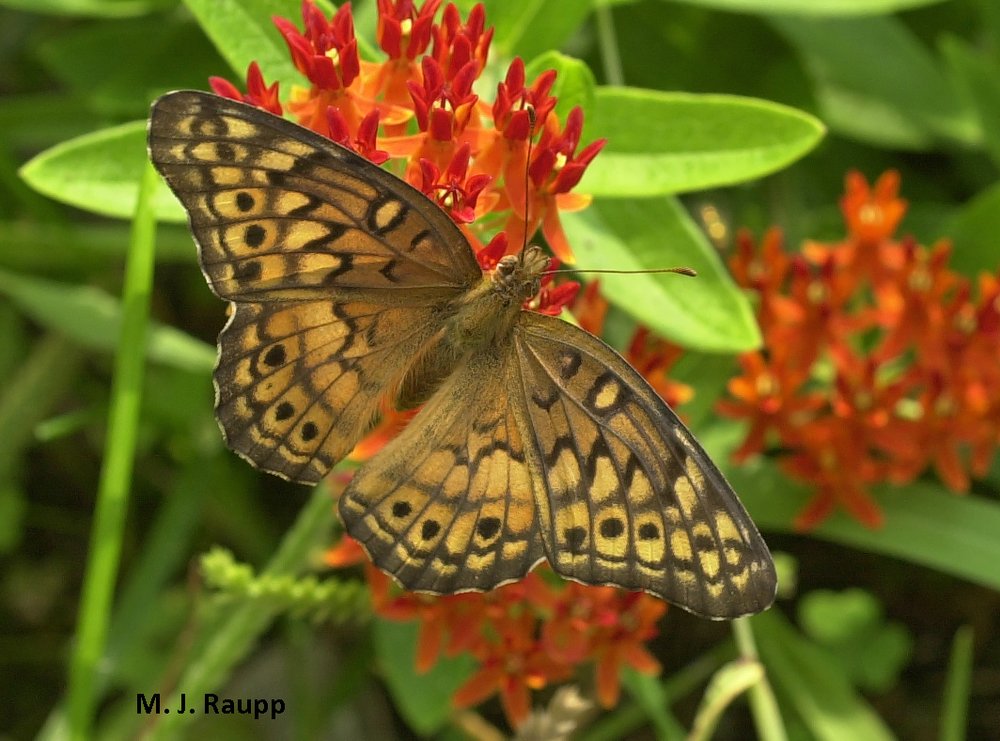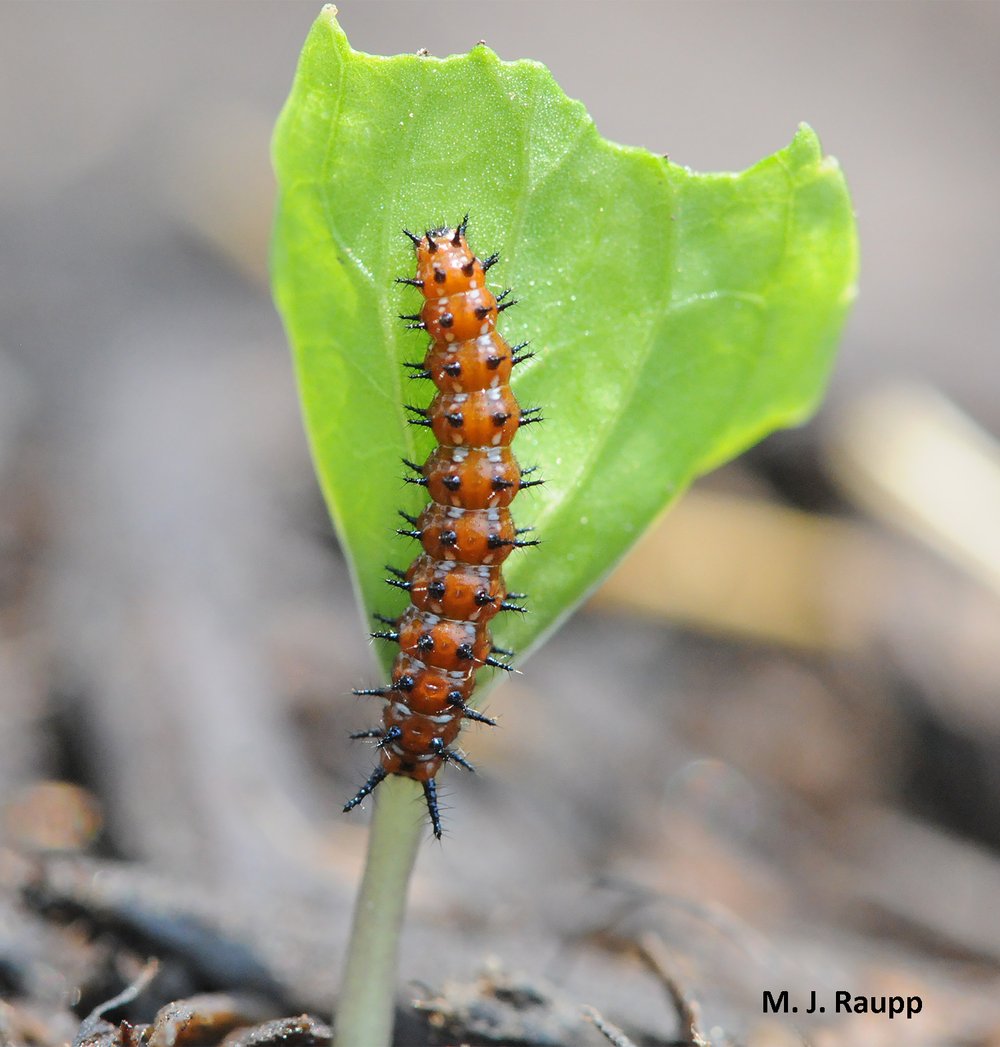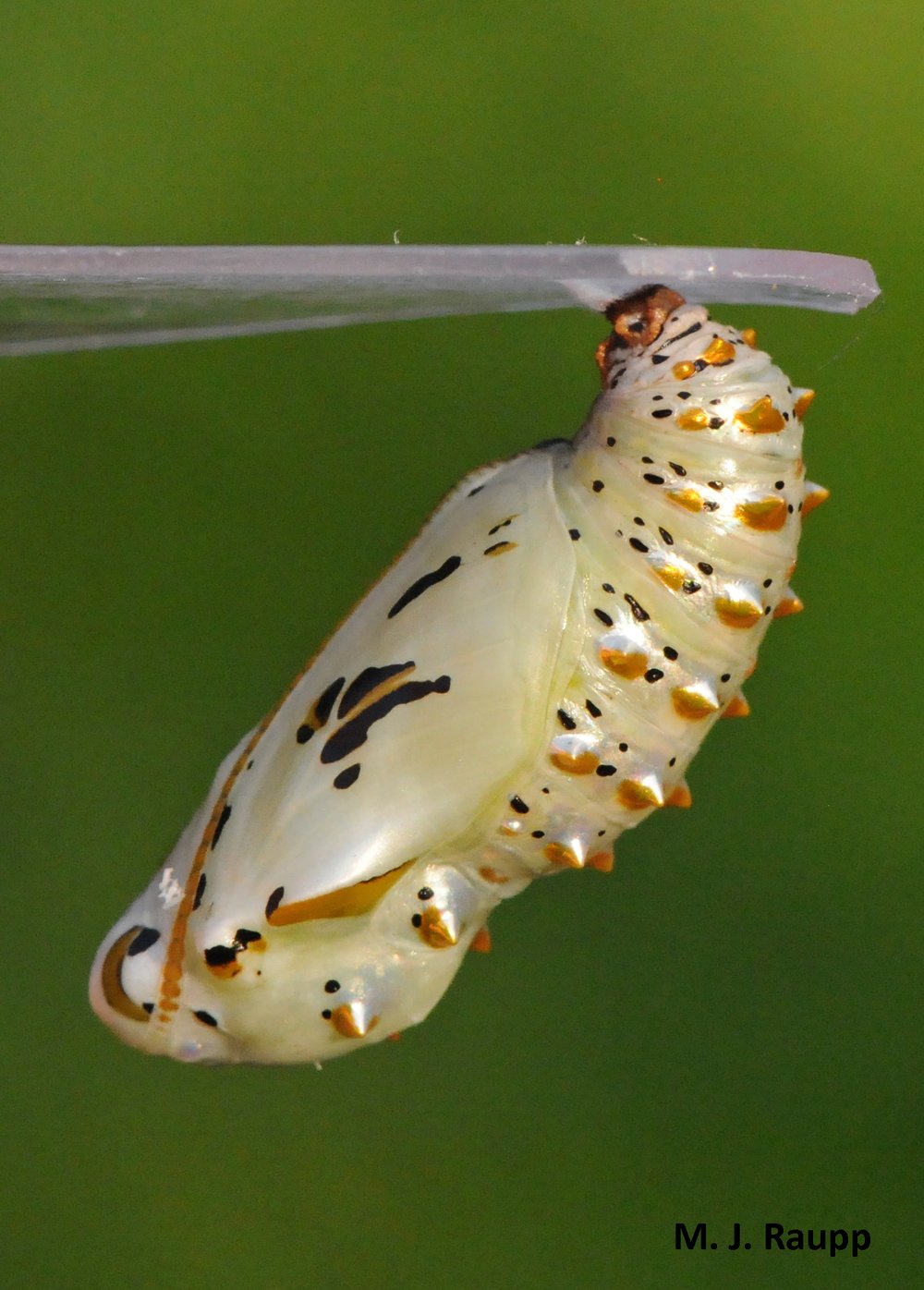From the Bug of the Week mailbag: Monarchs aren’t the only orange and black migrant here in the DMV – Variegated Fritillary, Euptoieta claudia

Many flowering plants including butterfly weed are used as nectar sources for variegated fritillaries and many other pollinators.

Variegated fritillaries will be seen in gardens even during the month of November here in Maryland. Photo credit: Adreon Hubbard
In previous episodes we explored the travails of iconic monarch butterflies on the eastern and western coasts of North America where these long-distance travelers struggled with habitat destruction, climate change, disease, and pesticides. Unbeknownst to many folks is the fact that monarchs are not the only migratory visitors to the DMV. Several other insects, including another beautiful orange and black butterfly, the variegated fritillary, visit the DMV in the warmth of summer and head south to escape our chilly winters. Recently, an observant naturalist inquired about the migratory behaviors of these lovely peripatetic visitors.

A gorgeous fritillary caterpillar happily munches on violets in my landscape.
Here’s the deal. Several years ago, I willingly surrendered the battle to maintain a lawn as a monoculture of exotic grasses like fescue or zoysia and as a result, floristically speaking, my yard has become quite diverse. Among the winners in the ground cover competition, particularly in shady spots and landscape beds, violets rule. With regularity, I notice significant nibbles and bites at the margins of the omnipresent violets, and upon closer inspection several glorious larvae of the variegated fritillary were found grazing on violet leaves. These tiny caterpillars were the spawn of orange and black variegated fritillaries that appear in my landscape each year, attracted by the bountiful floral resources needed for their sustenance.
In many states the variegated fritillary is a migrant, moving ever northward from its winter redoubts in the south. Much like our friends the monarchs who chase fresh patches of milkweeds as they move northward from overwintering grounds in Mexico, variegated fritillaries expand their range northward and colonize fresh crops of host plants for caterpillars and flower blossoms for adults. One has to wonder if the northern migration also helps them escape from hungry predators or stealthy parasitoids that hunt them in their overwintering grounds. Following their arrival in the DMV and well into autumn, they will be regular visitors to open sunny areas such as fields, pastures, lawns, and along the edges of roads where females consume pollen and nectar from butterfly weed, milkweed, dogbane, zinnias, cone flowers, red clover, and a variety of other plants. When they are ready to lay eggs, females seek nutritious plants such as mayapple, lamb’s ear, purslane, and violets, on which to lay eggs.
Whether munching leaves of hooded violets or petals of a pansy, variegated fritillary caterpillars find these members of the Viola clan delectable. Adults love to nectar on cone flowers in the summer and can be seen in late autumn basking in the sun among fallen leaves before heading south for the winter.

Within a breathtaking chrysalis, the caterpillar becomes a butterfly.
The caterpillars are gorgeous, bedecked in bright bands of orange and white. The body is festooned with stout black spines. Unlike some caterpillars we visited in previous episodes, these spines are not reported to deliver a nasty sting. In addition to consuming my volunteer violets, I have discovered several fritillary caterpillars devouring the petals of my pansies, another member of the viola clan. Variegated fritillaries will be resident and complete three generations over the course of the summer here in Maryland. In some states above the Mason-Dixon Line only two generations occur each year, and in colder reaches of the US and southern Canada, but a single annual brood is found. Here in my landscape, they are one of the last butterflies seen well into fall. As the days grow shorter and the night times chillier, the last of the variegated fritillaries will head south for warmer overwintering grounds. Those not heeding Mother Nature’s warnings face a chilly demise if they remain here in the DMV, thereby removing their foolish genes from the population of these fascinating vagabonds.
Acknowledgements
“Caterpillars of North America” by David Wagner, “A Swift Guide to Butterflies of North America” by Jeffrey Glassberg, and the Maryland Biodiversity Project were used as references for this episode. Bug of the Week thanks Adreon Hubbard for providing the nice image of a variegated fritillary and providing inspiration for this story.
This post appeared first on Bug of the Week